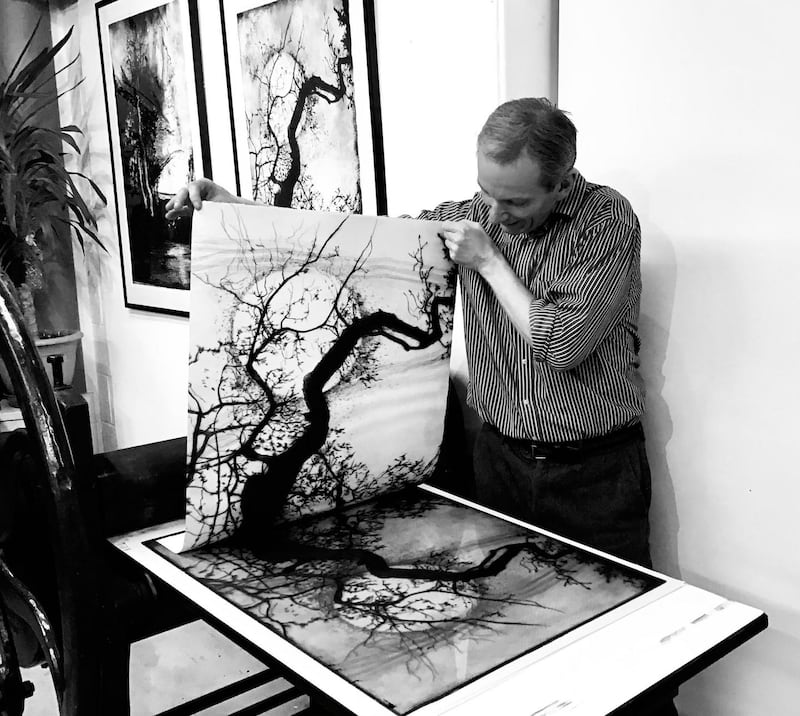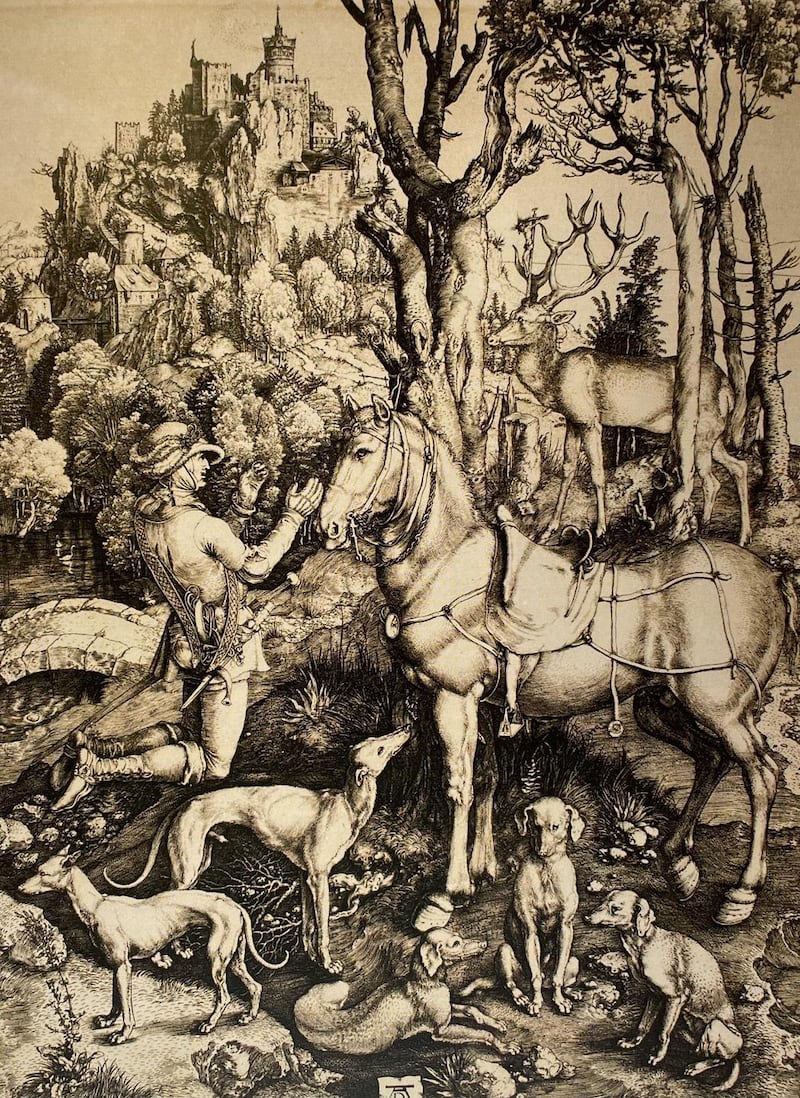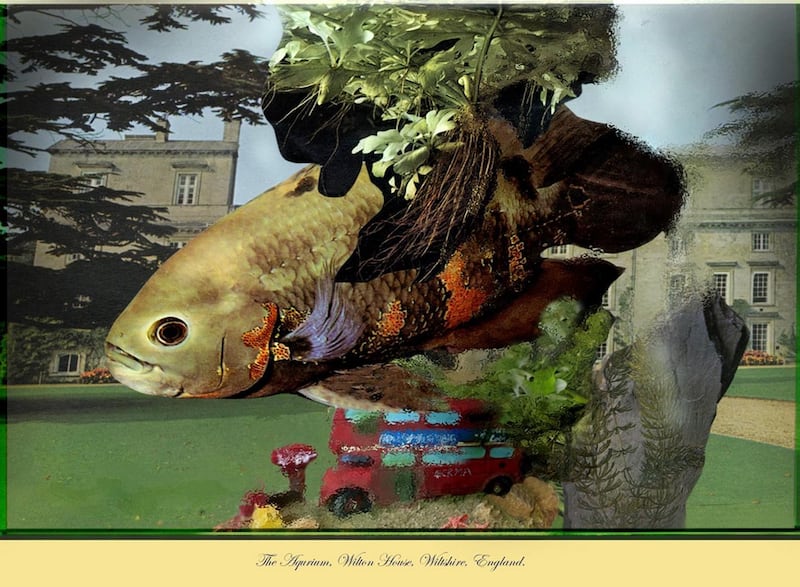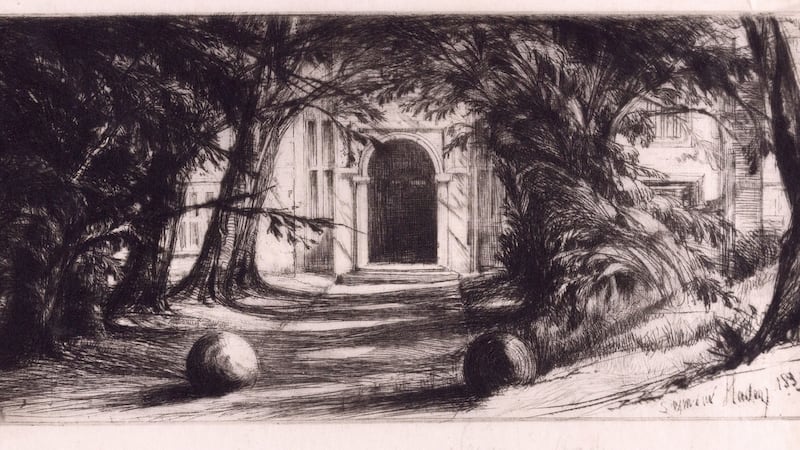Some years prior to Britain's Queen Elizabeth requesting one of his prints of Marlborough College, Edward Twohig, was the first European to be bestowed with honorary membership of The Academy of Fine Arts in Azerbaijan. The Cork native first visited the medieval walled city of Baku in 2011.
"I just felt a great connection with the place. It reminded me of what Ireland was before the Celtic Tiger; all about family, the seasons and nature." The printmaker, who trained at the Crawford College of Art, was attempting to create 100 views of the city and was spotted by the director of the academy who requested Twohig hold an exhibition in the former Soviet Republic. So began the long relationship with Twohig and Azerbaijan, where he has since returned on more than 20 occasions.
His work was also recognised when he became the first Irish student to be awarded a British Council scholarship to study art at the Chelsea College of Art and Design, now University of the Arts, London and one of the most prestigious art colleges in the world. After years working at what he calls "doing a grand tour of the independent schools" in the UK, he now holds tenure as head of the art department at Marlborough College in Wiltshire, where former pupils include poet Sir John Betjeman, singer Chris de Burgh and the Duchess of Cambridge, Kate Middleton. It was also the alma mater of the Queen's granddaughters Beatrice and Eugenie, which led the monarch to request some of Twohig prints. This year his works were acquired by the British Museum, the Victoria and Albert Museum and the Metropolitan Museum in New York.

Now at home for a break, Twohig is holding an exhibition, Print REbels in collaboration with the Irish Georgian Society, of 140 prints from his own private collection which currently exceeds 7,000. The title takes its name from the RE – the Royal Society of Printmakers, and the fact that their founder Francis Seymour Haden, was a rebel in terms of printmaking.
The exhibition was first brought together in the Bankside Gallery, London in 2018 to celebrate the 200th anniversary of the birth of Haden, but interestingly the best of Haden’s work despite being an Englishman, was produced in Ireland.
“The more I learnt about Haden, the more I was intrigued,” says Twohig. “He was a surgeon and to steady his hand he started creating etchings. It was a brilliant scientific mind coupled with printmaking.” Twohig goes on to explain that Haden’s patients included Queen Victoria, Charles Stuart Parnell and two Dukes of Wellington, and that his best work was created along the banks of the River Muteen in Tipperary at the estate of Viscount Hawarden, the early Palladian house now Dundrum House Hotel.
“He was really so clever, when he visited his patients he stayed with them and at Dundrum he set up a studio in the stables. His work is incredible as it was abstract representation, and this was 1862 – well before impressionism was even invented.”

On the notion of Haden being a rebel Twohig explains: “As the first president of the society he stipulated in a bye-law in 1881 that membership of the RE, was open to all, and quality – rather than nationality, class and gender – was what was of ultimate importance. It was one of the first royal societies to admit men and women on equal terms.”
Haden also broke the Victorian narrative of prints, which were essentially just copies of famous works and elevated them to a new status of original works of art, in limited editions and signed by the artists – which had never been done before – “that gave them a value and impetus in their own right”. The legacy of his tenure as president of the Royal Society of Printmakers paved the way for the etching revival of the next 75 years.
Twohig says that Whistler (James McNeill) is often credited with what Haden achieved, (saying they hated each other) though his output was fifteen times that of Whistler, and Haden was held in greater esteem in France, the United States and Ireland than in the UK.


Twohig began collecting at the age of seventeen when he bought a Haden print, followed by a Durer at the age of 22.
"The Durer cost a year's salary at the time and the director of the Fine Arts Society (Gordon Cooke) tried to talk me out of it – due to the cost and the fact that I was so young - but it was the start of my obsession with collecting."
Along with some of his own works, and those by past presidents of the RE, the exhibition, which is accompanied by a book on the subject, will contain works by other distinguished printmakers such as Durer, Rembrandt, Pissarro and George Rouault and Whistler. Admission is free and the exhibition runs at the City Assembly House in Dublin from July 9th until August 27th.



















